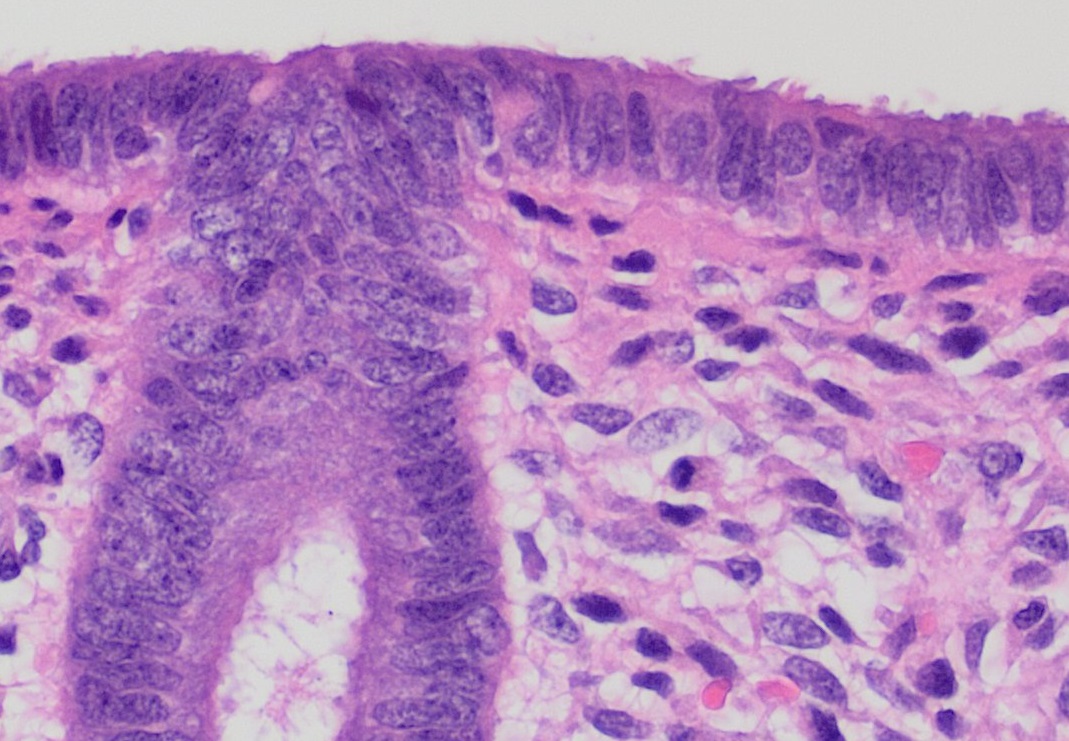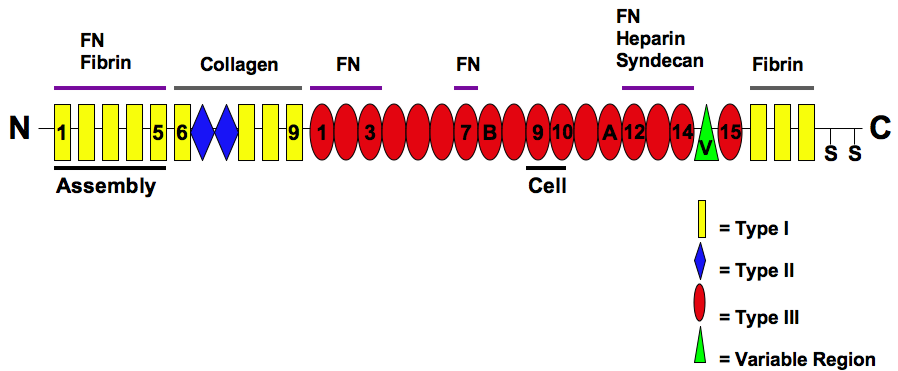|
Uteroglobin
Uteroglobin, or blastokinin, also known as secretoglobin family 1A member 1 (SCGB1A1), is a protein that in humans is encoded by the ''SCGB1A1'' gene. SCGB1A1 is the founding member of the secretoglobin family of small, secreted, disulfide-bridged dimeric proteins found only in mammals. This antiparallel disulfide linked homodimeric protein is multifunctional and found in various tissues in various names such as: uteroglobin (UG, UGB), uteroglobin-like antigen (UGL), blastokinin, club-cell secretory protein (CCSP), Clara-cell 16 kD protein (17 in rat/mice), club-cell-specific 10 kD protein (CC10), human protein 1, urine protein 1 (UP-1), polychlorinated biphenyl-binding protein (PCB-BP), human club cell phospholipid-binding protein (hCCPBP), secretoglobin 1A member 1 (SCGB1A1). This protein is specifically expressed in club cells in the lungs. Function The precise physiological role of uteroglobin is not yet known. Putative functions are: # Immunomodulation # Progesterone bindin ... [...More Info...] [...Related Items...] OR: [Wikipedia] [Google] [Baidu] |
Secretoglobin
Secretoglobins (SCGBs) are a family of small, alpha-helical, disulfide linked, dimeric proteins found only in mammals. This family was formerly known as the Uteroglobin/Clara cell 10-kDa family, after the two aliases of its founding member Uteroglobin. Structure and function The proteins are mostly alpha-helical, and the dimer is formed in an antiparallel way. The dimer interface features a cavity formed across the two monomers, which can accommodate small to medium sized ligands like steroids and phospholipids. The binding and release may be coupled with the redox state of the cystines, i.e. the presence of these disulfide bonds. Many have regulatory functions. Classification The family was classified by sequence homology into 6 subfamilies in 2006. The human and mouse genomes only contain the first three families, per a 2011 update. Not every family is monophyletic. Rat prostatein (rat prostatic steroid binding protein) is a three component, tetrameric protein complex ... [...More Info...] [...Related Items...] OR: [Wikipedia] [Google] [Baidu] |
Protein
Proteins are large biomolecules and macromolecules that comprise one or more long chains of amino acid residue (biochemistry), residues. Proteins perform a vast array of functions within organisms, including Enzyme catalysis, catalysing metabolic reactions, DNA replication, Cell signaling, responding to stimuli, providing Cytoskeleton, structure to cells and Fibrous protein, organisms, and Intracellular transport, transporting molecules from one location to another. Proteins differ from one another primarily in their sequence of amino acids, which is dictated by the Nucleic acid sequence, nucleotide sequence of their genes, and which usually results in protein folding into a specific Protein structure, 3D structure that determines its activity. A linear chain of amino acid residues is called a polypeptide. A protein contains at least one long polypeptide. Short polypeptides, containing less than 20–30 residues, are rarely considered to be proteins and are commonly called pep ... [...More Info...] [...Related Items...] OR: [Wikipedia] [Google] [Baidu] |
Gene
In biology, the word gene has two meanings. The Mendelian gene is a basic unit of heredity. The molecular gene is a sequence of nucleotides in DNA that is transcribed to produce a functional RNA. There are two types of molecular genes: protein-coding genes and non-coding genes. During gene expression (the synthesis of Gene product, RNA or protein from a gene), DNA is first transcription (biology), copied into RNA. RNA can be non-coding RNA, directly functional or be the intermediate protein biosynthesis, template for the synthesis of a protein. The transmission of genes to an organism's offspring, is the basis of the inheritance of phenotypic traits from one generation to the next. These genes make up different DNA sequences, together called a genotype, that is specific to every given individual, within the gene pool of the population (biology), population of a given species. The genotype, along with environmental and developmental factors, ultimately determines the phenotype ... [...More Info...] [...Related Items...] OR: [Wikipedia] [Google] [Baidu] |
Club Cell
Club cells, also known as bronchiolar exocrine cells, are low columnar/cuboidal cells with short microvilli, found in the small airways (bronchioles) of the lungs. They were formerly known as ''Clara cells''. Club cells are found in the ciliated simple epithelium. These cells may secrete glycosaminoglycans to protect the bronchiole lining. Bronchiolar cells gradually increase in number as the number of goblet cells decrease. One of the main functions of club cells is to protect the bronchiolar epithelium. They do this by secreting a small variety of products, including club cell secretory protein uteroglobin, and a solution similar in composition to pulmonary surfactant. They are also responsible for detoxifying harmful substances inhaled into the lungs. Club cells accomplish this with cytochrome P450 enzymes found in their smooth endoplasmic reticulum. Club cells also act as a stem cell, multiplying and differentiating into ciliated cells to regenerate the bronchiolar epitheli ... [...More Info...] [...Related Items...] OR: [Wikipedia] [Google] [Baidu] |
Progesterone
Progesterone (; P4) is an endogenous steroid and progestogen sex hormone involved in the menstrual cycle, pregnancy, and embryogenesis of humans and other species. It belongs to a group of steroid hormones called the progestogens and is the major progestogen in the body. Progesterone has a variety of important functions in the body. It is also a crucial metabolic intermediate in the production of other endogenous steroids, including the sex hormones and the corticosteroids, and plays an important role in brain function as a neurosteroid. In addition to its role as a natural hormone, progesterone is also used as a medication, such as in combination with estrogen for contraception, to reduce the risk of Uterine cancer, uterine or cervical cancer, in hormone replacement therapy, and in feminizing hormone therapy. It was first prescribed in 1934. Biological activity Progesterone is the most important progestogen in the body. As a potent agonist of the progesterone receptor, nu ... [...More Info...] [...Related Items...] OR: [Wikipedia] [Google] [Baidu] |
Endometrium
The endometrium is the inner epithelium, epithelial layer, along with its mucous membrane, of the mammalian uterus. It has a basal layer and a functional layer: the basal layer contains stem cells which regenerate the functional layer. The functional layer thickens and then is shed during menstruation in humans and some other mammals, including other apes, Old World monkeys, some species of bat, the elephant shrew and the Cairo spiny mouse. In most other mammals, the endometrium is reabsorbed in the estrous cycle. During pregnancy, the glands and blood vessels in the endometrium further increase in size and number. Vascular spaces fuse and become interconnected, forming the placenta, which supplies oxygen and nutrition to the embryo and fetus.Blue Histology - Female Reproductive System ... [...More Info...] [...Related Items...] OR: [Wikipedia] [Google] [Baidu] |
Lagomorphs
The lagomorphs () are the members of the taxonomic order Lagomorpha, of which there are two living families: the Leporidae (rabbits and hares) and the Ochotonidae (pikas). There are 110 recent species of lagomorph, of which 109 species in twelve genera are extant, including ten genera of rabbits (42 species); one genus of hare (33 species) and one genus of pika (34 species). The name of the order is derived from the Ancient Greek (, "hare") + (, "form"). Taxonomy and evolutionary history Other names used for this order, now considered synonymous, include: ''Duplicidentata'' (Illiger, 1811); ''Leporida'' (Averianov, 1999); ''Neolagomorpha'' (Averianov, 1999); ''Ochotonida'' (Averianov, 1999); and ''Palarodentia'' (Haeckel, 1895; Lilian, 2016). The evolutionary history of the lagomorphs is still not well understood. In the late 20th century, it was generally agreed that '' Eurymylus'', which lived in eastern Asia and dates back to the late Paleocene or early Eocene, was an anc ... [...More Info...] [...Related Items...] OR: [Wikipedia] [Google] [Baidu] |
Phospholipase A2
The enzyme phospholipase A2 (EC 3.1.1.4, PLA2, systematic name phosphatidylcholine 2-acylhydrolase) catalyses the cleavage of fatty acids in position 2 of phospholipids, hydrolyzing the bond between the second fatty acid "tail" and the glycerol molecule: :phosphatidylcholine + H2O = 1-acylglycerophosphocholine + a carboxylate This particular phospholipase specifically recognizes the ''sn''2 acyl bond of phospholipids and catalytically hydrolyzes the bond, releasing arachidonic acid and lysophosphatidyl choline, a precursor of lysophosphatidic acid. Upon downstream modification by cyclooxygenases or lipoxygenases, arachidonic acid is modified into active compounds called eicosanoids. Eicosanoids include prostaglandins and leukotrienes, which are categorized as anti-inflammatory and inflammatory mediators. PLA2 enzymes are commonly found in mammalian tissues as well as arachnid, insect, and snake venom. Venom from bees is largely composed of melittin, which is a stimulan ... [...More Info...] [...Related Items...] OR: [Wikipedia] [Google] [Baidu] |
Phosphatidylcholine
Phosphatidylcholines (PC) are a class of phospholipids that incorporate choline as a headgroup. They are a major component of biological membranes and can easily be obtained from a variety of readily available sources, such as egg yolk or soybeans, from which they are mechanically or chemically extracted using hexane. They are also a member of the lecithin group of yellow-brownish fatty substances occurring in animal and plant tissues. Dipalmitoylphosphatidylcholine (lecithin) is a major component of the pulmonary surfactant, and is often used in the lecithin–sphingomyelin ratio to calculate fetal lung maturity. While phosphatidylcholines are found in all plant and animal cells, they are absent in the membranes of most bacteria, including ''Escherichia coli ''Escherichia coli'' ( )Wells, J. C. (2000) Longman Pronunciation Dictionary. Harlow ngland Pearson Education Ltd. is a gram-negative, facultative anaerobic, rod-shaped, coliform bacterium of the genus '' Esch ... [...More Info...] [...Related Items...] OR: [Wikipedia] [Google] [Baidu] |
Phosphatidylinositol
Phosphatidylinositol or inositol phospholipid is a biomolecule. It was initially called "inosite" when it was discovered by Léon Maquenne and Johann Joseph von Scherer in the late 19th century. It was discovered in bacteria but later also found in eukaryotes, and was found to be a signaling molecule. The biomolecule can exist in 9 different isomers. It is a lipid which contains a phosphate group, two fatty acid chains, and one inositol sugar molecule. Typically, the phosphate group has a negative charge (at physiological pH values). As a result, the molecule is amphiphilic. The production of the molecule is limited to the endoplasmic reticulum. History of phospatidylinositol Phosphatidylinositol (PI) and its derivatives have a rich history dating back to their discovery by Johann Joseph von Scherer and Léon Maquenne in the late 19th century. Initially known as " inosite" based on its sweet taste, the isolation and characterization of inositol laid the groundwork for und ... [...More Info...] [...Related Items...] OR: [Wikipedia] [Google] [Baidu] |
Fibronectin
Fibronectin is a high- molecular weight (~500-~600 kDa) glycoprotein of the extracellular matrix that binds to membrane-spanning receptor proteins called integrins. Fibronectin also binds to other extracellular matrix proteins such as collagen, fibrin, and heparan sulfate proteoglycans (e.g. syndecans). Fibronectin exists as a protein dimer, consisting of two nearly identical monomers linked by a pair of disulfide bonds. The fibronectin protein is produced from a single gene, but alternative splicing of its pre-mRNA leads to the creation of several isoforms. Two types of fibronectin are present in vertebrates: * soluble plasma fibronectin (formerly called "cold-insoluble globulin", or CIg) is a major protein component of blood plasma (300 μg/ml) and is produced in the liver by hepatocytes. * insoluble cellular fibronectin is a major component of the extracellular matrix. It is secreted by various cells, primarily fibroblasts, as a soluble protein dimer and is ... [...More Info...] [...Related Items...] OR: [Wikipedia] [Google] [Baidu] |






